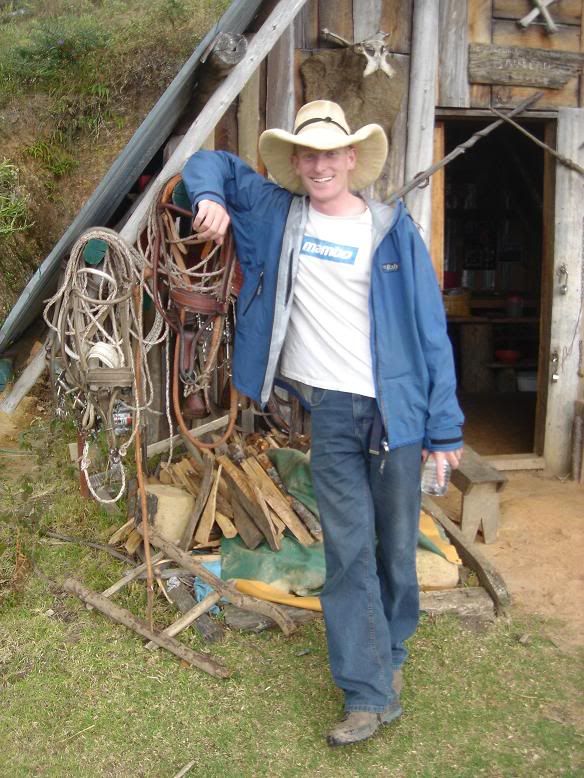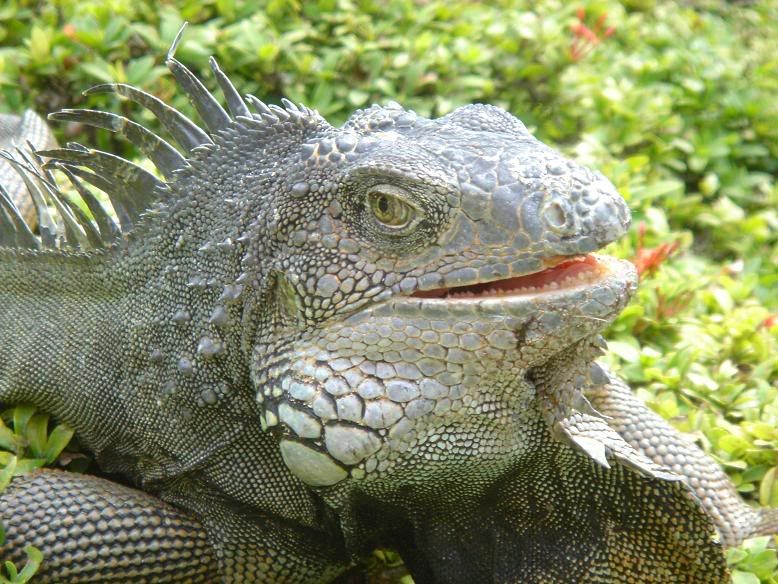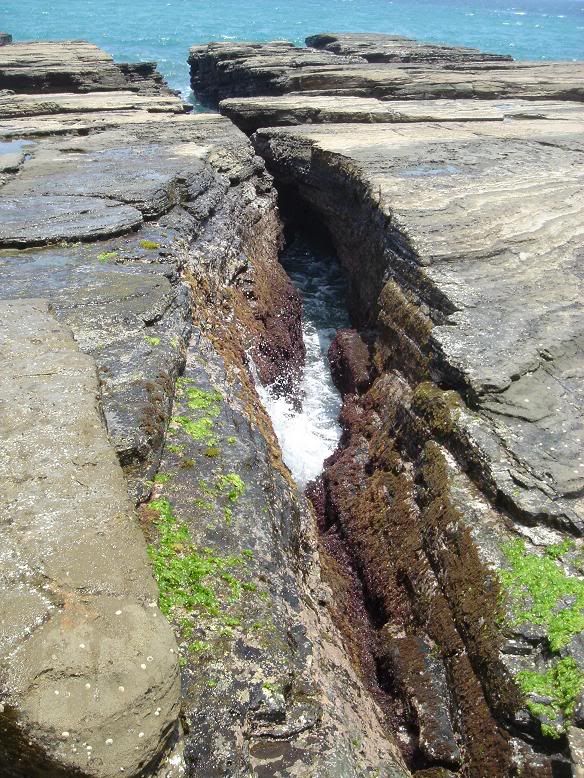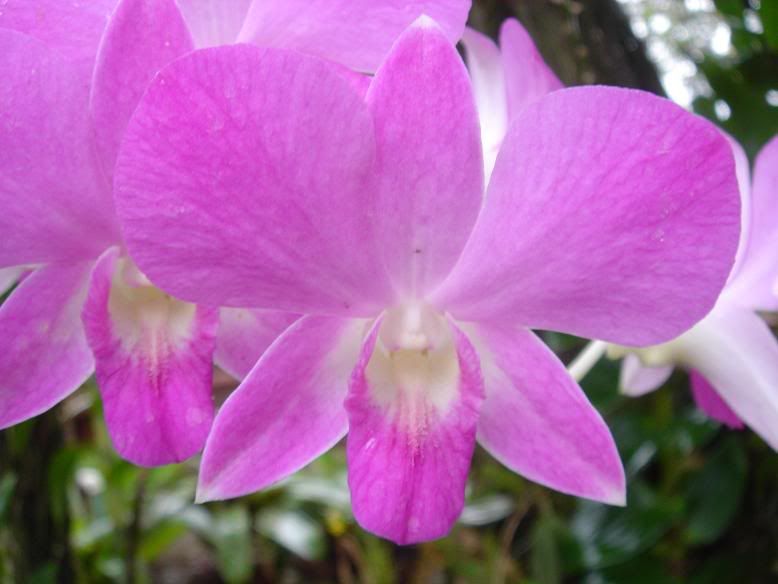To cut a long story short, there was not the availability we were expecting, and we ended up paying a little over the odds for an 8 day cruise on a boat that theoretically sounded good but that we had heard bad things about. The good ship Free Enterprise was a 110 foot motor-sailor, tourist superior class boat - we were promised an air conditioned cabin with private bath and hot water. Further research in town (after we had paid) brought up some interesting views; from the web review - "This boat is a deathtrap, stay away", to the guys in all the dive shops - "oh dear", to the owner of our accommodation - "Well, it's an economy class boat...."; we struggled to find a good word said about it. Still, beggars can't be choosers and it was our only option.... and the travel agent wasn't in the refund business.

The fair ship.....
So we settled down to spend a couple of days waiting for our cruise, buying t-shirts, playing with the husky puppy who lived in our accommodation, and tentatively trying snorkelling. The weather was unexpectedly cool (relatively speaking) and the water was pretty cold too - we opted to hire wetsuits for our cruise. We found delicious chocolate brownies, loads of sea lions (they're everywhere) and possibly the best selection of souvenir t-shirts in South America. Amongst all this we found plenty of time to bite fingernails and worry in general about our forthcoming trip aboard a dodgey boat.
The Galapagos Islands lie a thousand kilometres off the shore of Ecuador, just about on the equator, in the middle of the Pacific Ocean. They are (relatively) young - a piffling 5 million years or so, and volcanic activity continues to produce new islands and land as the archipelago drift slowly (2cm a year) eastwards on the Nasca tectonic plate. They also sit at the confluence of several ocean currents - the warm Panama current coming from Central America, the cold Humbolt current coming from Antarctica, and another cold upwelling from the central Pacific.

Sunset on the boat
So what does this mean? There is a huge variety of marine life due to the temperature variations in the sea - there are huge marine turtles, lots of sharks, hoards of colourful fish and thousands of sea lions. On land there are many endemic plant, bird, reptile and animal species; this is after all, where Charles Darwin cut his teeth. We could go into great detail about the endemic species and adaptation to individual islands - as exemplified by Darwin's finches or the giant tortoises - but we'd rather show you the photos.

Santa Fe land iguana - an endemic sub-species
So we started our cruise on Tuesday morning, arriving early to be told to come back later as the boat was still being cleaned. We eventually got on board about 11.30 before most of the guests who had flown that morning arrived; we quickly bagged the best cabin - the air conditioning didn't look operational so we opted for a cabin mid ships (away from the noise of the anchor and away from the noise and fumes of the engine) with windows that opened - what luxury! The rest of out fellow passengers arrived and to our relief they were a nice mix of Australians, Swiss, Swedish, Canadian and English, all around our age. After a good lunch we set off on our first trip to Isla de Lobos for snorkeling with sea lions. These are really the dogs of the sea; they just wanted to play with us and can be incredibly bold. That said, if the dominant Bull takes a disliking to you swimming with his cows then you're in trouble as they can weigh up to 250 Kg and swim an awful lot faster than the average be-flippered human! After 45 minutes in the water we were cold but exhilarated - up to 5 or 6 sea lions didn't want to stop the fun as hypothermia set in.

Spot the sea lions!
We then went ashore and literally had to step over the dozing sea lions to get on dry land. There were lots of cute fluffly pups (Pete didn't think I could have one as a pet though); being in such close proximity with large wild animals was an experience we would repeat often and always treasure - the occasions were usually marked by Pete taking several close up shots of sea lion pups.

How can you not take a photo of this?
We returned to the Free Enterprise and motored back to port for dinner and refuelling, departing in the middle of the night for the 6 hour crossing across open seas to Española island. Coming from sea fairing stock I thought that I'd have my sea legs in no time and laughed when Pete offered me the sea sickness tablets that he had had the good foresight to purchase. I awoke at some silly time in the night feeling decidely not right and lay awake thinking about how really ill I felt and decided to awake Pete and ask how he was feeling. Ten minutes later I sprang from my bunk in a manner which would impress an Olympic gymnastic judge and got to the heads (that's the toilets for you landlubbers) just in time; this aerobatic display impressed Pete so much that he did the same thing 5 minutes later. Those of you who have witnessed Pete's vomiting in the past will realise that it is the loudest, inhuman, growling noise imaginable, and several passengers thought that there must be a huge distressed sea lion bull following our boat all night. And so that was it for the rest of the night - we took turns with each other for "conversations with the big white telephone" until we hit rock bottom and both had to go at once. It wasn't pretty. Eventually at some point the boat stopped rocking in every conceivable direction and anchored; we surfaced for breakfast looking particularly peaky and to our disappointment none of our fellow passengers had seemed to feel the slightest bit queasy. Suddenly those seasickness tablets seemed a lot more appealing.
Relieved to get onto terrafirma we went ashore at Gardners Bay and walked along the beach, again trying to avoid stepping on sea lions. After a pleasant doze in the sun we got back onboard the Free Enterprise tenders and snorkeled in the cold water around Turtle Rock; but despite it's name we didn't see any turtles and there was poor visibility in general - but lots of very colourful fish. After lunch, feeling refreshed after our chilly dip, we called into Punta Suarez and made a shore landing and saw our first Boobies (no, not a nudest beach, but the Blue Footed- and Masked -, bird kind). Other wildlife included the Waved Albatross, Red Billed Tropical Bird, Galapagos hawk (endemic to the islands) and marine iguanas - the only seagoing iguanas in the world that are an endemic species. They have a habit of sneezing all the time, either because they have a nasty allergy to gringos, or because it is how they remove the excess salt they receive from their diet (of seaweed) through special glands in their noses (you decide!).

Marine iguanas

Waved Albatross
Fortunately we got to our next stop of Floreana that night and had a good nights sleep anchored in a relatively sheltered bay. Awaking refreshed that morning we made our first shore landing at Post Office Bay, apparently one of the world's first post office as in 1792 a barrel was erected by whalers who left post there; if any ships call in on their way past they would pick up any relevant mail and deliver it when they arrived in their home country. This tradition continues today, but despite Pete and I going through all the postcards we couldn't find any for the UK so left a couple there instead. We walked on up a hill to a lava cave, a geological phemonenom. We then sailed (motored) onto Punta Cormorant to find a flamingo lagoon, (more) sea lions and, on the beach on the other side of the headland, we saw sharks and stingrays in the surf. We returned onboard to get our snorkeling gear and swim around Devils Crown; despite my lack of enthusiasm - "Didn't we just see sharks?!" - and the rather strong current Pete convinced me to plunge in and we were lucky enough to see lots of fish, turtles!! and stingrays. We then set off for the tourist capital of the archipelo, Puerto Ayora on Santa Cruz island.

Blue Footed Boobie
The following day we went ashore to the Charles Darwin Research Station, home to the giant tortoise breeding programe and the world famous Lonesome George - the only giant tortoise of his sub species left. Despite the scientists' best efforts George didn't seem attracted to the charms of the 2 females of a closely related sub-species with whom he shared his enclosure, so it seems his genetic line will end unless someone out there has a Geochelone elephantophus abingdoni female as a pet. (Theres a $10,000 reward for anyone who can find George a date!) After lunch we headed into the highlands of Santa Cruz to my favourite ecosystem - cloud forest - which was characterised by the Scalesia genus of trees - this genus only occurs in the Galapagos, needless to say I found this very exciting! On the way back to the boat we stopped off at a ranch where wild giant tortoises seem to hang out. We all got our photos with them while discussing the merits of Pete's entrepreneurial idea of "Galapagos eco-hunting" holidays; the plan is to get tourists to help rid the islands of feral goats which are the main threat to the tortoises survival, as they destroy the tortoises' habitat and out-compete them for food. The marketing slogan is "If it's Feral, it's in Peril"... venture capitalists please post a comment!
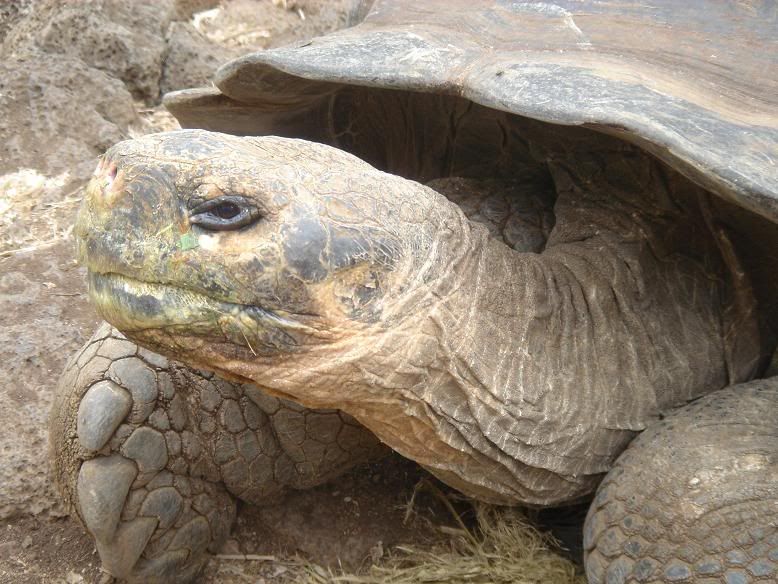
This is a giant tortoise, honest
Overnight we set off for Isla Rabida and either the sea sickness tablets were working or we were turning into salty sea dogs; whichever, we managed to sleep the whole night. Rabida has a red coloured beach due to the high iron in the rocks that make up this small island. Again there were lots of sea lions including the cute fluffy baby variety (by this stage we had at least 400 photos of sea lions) and we also had an impressive dive bombing display from blue footed boobies fish from a great height and with great precision. We snorkelled along the cliffs and saw lots more colourful fish - we missed out seeing some sharks as the strong current and cold turned us back. We then cruised on to the island of Chinese Hat and yes, thats because the volcanic island looks like an chinese hat. On the way we had a possible sighting of whales in the distance, a postive sighting of dolphins and a huge sting ray (we can say this with absolute certainty as one of our fellow passengers had been a marine biologist). We walked along the unforgiving laval shore taking in more marine iguanas, sea lions, lava lizards and the other usual suspects. We then had an excellent snorkelling session from the beach; in the space of 10 minutes we saw white tipped reef sharks (harmless to humans, I was assured), a sting ray, a moray eel, a friendly turtle, and of course Pete's favourite - the ever playful sea lions. To cap it all, the water was warm and we saw some Galapagos penguins on the way back to the boat. That evening we motored over to Isla Bartolomeo; by this point it was clear that our "sailing ship" had a grand total of 2 sails - a jib and a genoa - both of which were ripped.

Cute fluffy baby sea lion on Rabida beach

Galapagos penguin - another endemic species
We got up early and went ashore, walking up a set of steps to the top of the island which gave us fantastic views over the bay and of Pinnacle Rock. The island is at best 170 years old - it wasn't featured on the first charts of the archipelago. We then walked over to the northern beach and watched the white tipped sharks cruising in the shallows amongst stingrays; a short walk back and we were snorkeling off the south beach and around Pinnacle Rock; the water was freezing and we were disappointed that there were no sharks on this side of the island. After lunch we cruised to Isla Seymour and made a dry landing. Here we saw Magnificent and Great Frigate birds, the males' distinctive red goular pouches inflated on their nests, land iguanas and the usual others; all set against the stunning backdrop of pounding Pacific surf in the evening light. Yep, it was great.

The view from Bartolomeo

Male Magnificent (I think) Frigate Bird
The next morning we awoke at South Plaza and made a dry landing - lots of land iguanas, very colourful carpet weed and an array of birds, plus the odd Galapagos scorpion hiding under rocks. After lunch we motored to Santa Fe and went for a snorkel in Barrington Bay; in the cold we swam with white spot eagle rays and turtles. After drying off and warming up on board we made a shore landing and saw more land iguanas (an endemic sub-species on this island), and in the shallows of the beach hoards of white tipped reef sharks and rays - sadly we weren't allowed back in for another snorkel. Instead we set off back to San Cristobal, arriving just in time to make it to the pub.

Carpet weed on Chinese Hat

Shark!
The next day was the last of our cruise, and we finished off in the Interpretation Centre, which informed us of the history and unique flora and fauna of the Islands. Most of our fellow passengers departed for the airport and were returning to the mainland; we were staying another night so that evening met up with the few remaining passengers and had a celebratory meal. The fair ship Free Enterprise had got us everywhere we wanted to see and didn't sink - much to the disbelief of the locals - which is more that can be said for one of the more upmarket boats who made an unfortunate mooring at Santa Cruz a few days ago and managed to sink within 3 minutes (don't worry, no casualties).
The following day we said our sad goodbyes to our cruise companions and Rex, the trusty husky from our apartment, and boarded a plane back to Quito, capital of Ecuador. We have 5 weeks left.

